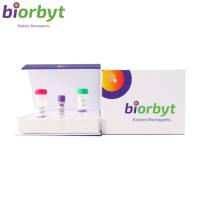The Use of Fluorescence Resonance Energy Transfer to Detect Conformational Changes in Protein Toxins
互联网
互联网
相关产品推荐

Leishmania K39 used to detect the antibody form visceral Leishmania infection 蛋白,orb2309211,biorbyt
¥10530

Mussel matrix with DSP toxins
¥650

Ribosomal protein L4 单克隆抗体 67028-1-Ig
¥1350

Recombinant-Rhizobium-sp-Probable-conjugal-transfer-protein-trbItrbIProbable conjugal transfer protein trbI
¥12614

Recombinant-Bacillus-pseudofirmus-Energy-coupling-factor-transporter-transmembrane-protein-EcfTecfTEnergy-coupling factor transporter transmembrane protein EcfT; ECF transporter T component EcfT
¥11144
相关问答
相关方法
推荐阅读
Monitoring the Topoisomerase II DNA Gate Conformational Change with Fluorescence Resonance Energy Transfer
Conformational Analysis of Biantennary Glycopeptides with a Resonance Energy Transfer Technique
Use of Spectral Fluorescence Resonance Energy Transfer to Detect Nitric Oxide‐Based Signaling Events in Isolated Perfused Lung

